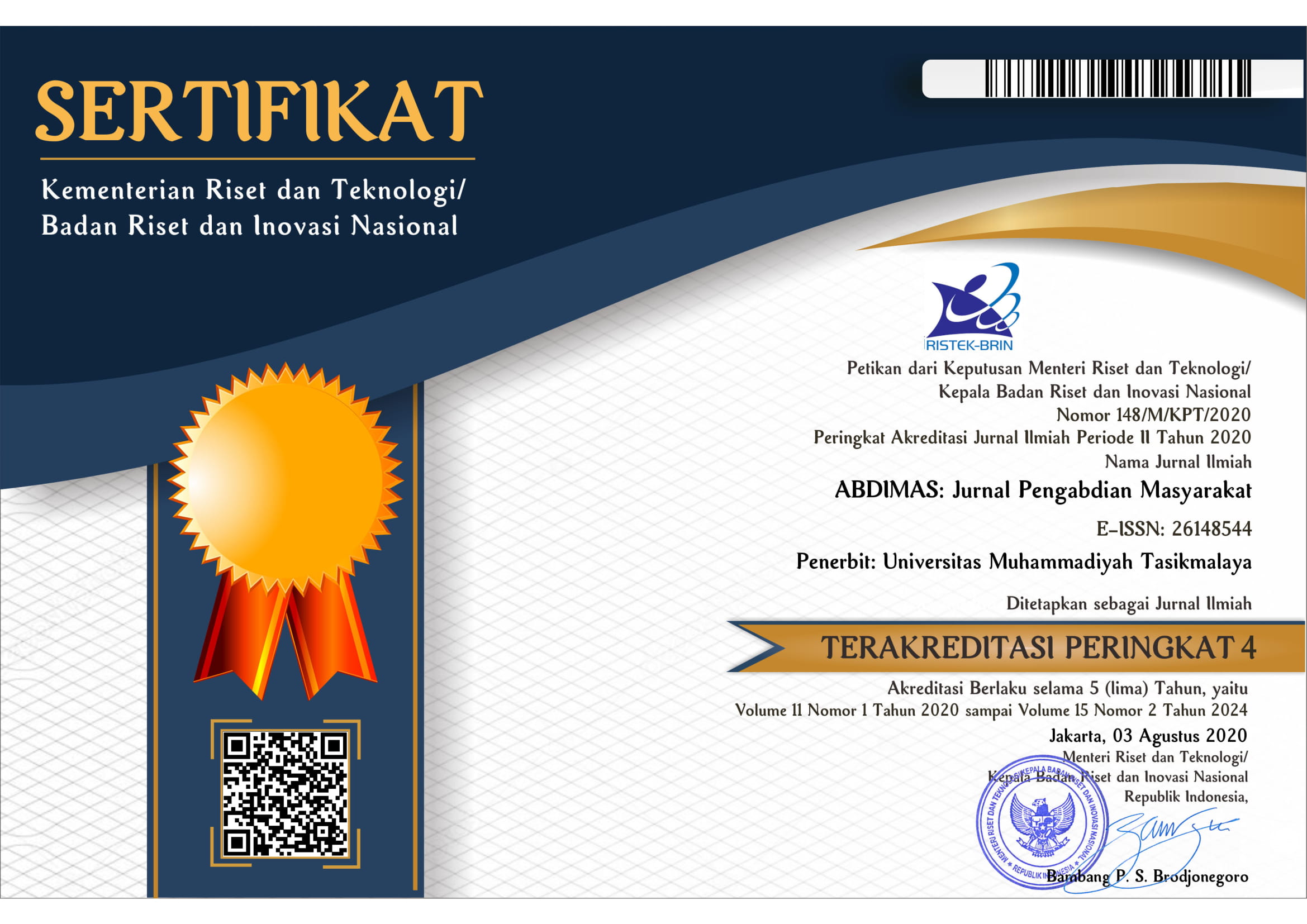Self – Care Training For Wound Diabetic Foot Using Guava Leaves Decoction
DOI:
https://doi.org/10.35568/abdimas.v5i1.2135Keywords:
wound care, diabetic mellitus, guava leavesAbstract
The complications of diabetes mellitus (DM) is diabetic ulcers. The principles of Preparation of the wound (3 M principles) are cleansing, removing necrotic tissue in the wound, choosing the right topical therapy. The aim of this community service to implementation research result about effectiveness of boiling guava leaves as wound washing for diabetic clients. The community service method was wound care diabetic training through guava leaves boil. The program have done as long as a week which the participant were diabetic client in Sidangkal public health center. Before doing community service, the client experienced on caring wound diabetic was used Na-CL, closed wound with cotton, washed every day, and used insulin as preventive diabetic complication. The result of training, the participant said the information about guava leaves boil was new information for them. And all participant also given positive response for this training. And the lead of public health center also said this program improve the knowledge of clients about caring wound diabetic foot.
Downloads
References
Antoni, A. and Harahap, Y. W. (2019) ‘Efektivitas pencucian luka menggunakan daun jambu biji terhadap tingkat malodor klien luka kaki diabetik’, Angewandte Chemie International Edition, 6(11), 951–952., 8(2), pp. 152–156.
Bellingeri, A. et al. (2016) ‘Effect of a wound cleansing solution on wound bed preparation and inflammation in chronic wounds: A single-blind RCT’, Journal of Wound Care, 25(3), pp. 160–168. doi: 10.12968/jowc.2016.25.3.160.
El-Ahmady, S. H., Ashour, M. L. and Wink, M. (2013) ‘Chemical composition and anti-inflammatory activity of the essential oils of Psidium guajava fruits and leaves’, Journal of Essential Oil Research, 25(6), pp. 475–481. doi: 10.1080/10412905.2013.796498.
Fernandez, R. and Griffiths, R. (2008) ‘Water for wound cleansing’, Cochrane Database of Systematic Reviews, (1). doi: 10.1002/14651858.CD003861.pub2.
Guintu, F. and Chua, A. (2013) ‘Effectivity of Guava leaves (Psidium guajava) as Mouthwash for Patients with Aphthous Ulcers’, Philipp J Otolaryngol Neck Surg, 28(2), pp. 8–13.
Ljubi, A. (2013) ‘Cleansing chronic wounds with tap water or saline: A Riview’, Journal Community Nurs, 27(1), pp. 19–21.
Metwally, A. M. et al. (2010) ‘Phytochemical investigation and antimicrobial activity of Psidium guajava L. leaves’, Pharmacognosy Magazine, 6(23), pp. 212–218. doi: 10.4103/0973-1296.66939.
Mishra, R. et al. (2017) ‘A comprehensive review on Psidium guajava Linn (Amaratafalam)’, International Journal of Ethnobiology & Ethnomedicine, 4(1), pp. 1–6. Available at: www.advancejournals.org.
Moffat, C., Marison, M. and Pina, E. (2004) ‘Wound bed preparation: science applied to practice’, Medical Education Partnership, pp. 12–17.
Tresierra-Ayala, M. Á. and García Rojas, A. (2017) ‘Association between peripheral arterial disease and diabetic foot ulcers in patients with diabetes mellitus type 2’, Medicina Universitaria, 19(76), pp. 123–126. doi: 10.1016/j.rmu.2017.07.002.
Wallace, G. F. (2007) ‘Debridement of Invasive Diabetic Foot Infections’, Clinics in Plastic Surgery, 34(4), pp. 731–734. doi: 10.1016/j.cps.2007.07.009.














